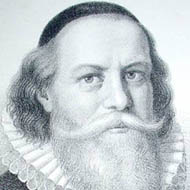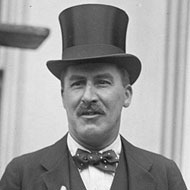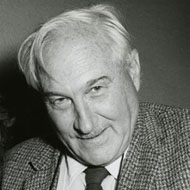
| Born | Marija Birutė Alseikaitė, January 23, 1921, Vilnius, Central Lithuania |
| Died | February 02, 1994, Los Angeles, California, U.S. |
| Nationality | Lithuanian/American |
| Other names | Lithuanian: Marija Gimbutienė |
| Alma mater | Vilnius University |
| Occupation | Archaeologist |
| Years active | 1949–1991 |
| Employer | University of California, Los Angeles |
| Known for | Kurgan hypothesis |
| Notable work | The Goddesses and Gods of Old Europe (1974), The Language of the Goddess (1989), The Civilization of the Goddess (1991), The Balts (1961), The Slavs (1971) |
About Marija Gimbutas
Archeologist Marija Gimbutas was born in Lithuania on January 23, 1921. She dies at the age of 73, on February 2, 1994.
She is a Lithuanian-American archaeologist who studies Neolithic and Bronze Age cultures. She is most known for promoting the matriarchal idea of pre-Indo-European societies.
All information about Marija Gimbutas can be found in this post. It will clarify Marija Gimbutas's info: biography, net worth, career, talent, spouse and breakup of Marija Gimbutas...
Marija Gimbutas before becoming famous
Marija Gimbutas was born in the Zodiac sign Aquarius (The Water-Bearer), and 1921 is the year of the Chinese Zodiac Rooster (雞).
She attended Vytautas Magnus University and Vilnius University.
Achievement of Marija Gimbutas
Her Kurgan hypothesis, which places the Proto-Indo-European homeland in the Pontic Steppe, is well-known.
Marija Gimbutas's Family, Spouse, Dating and Relationship
In 1941, she married architect Jurgis Gimbutas.
Marija Gimbutas Collabed with
She was a well-known archaeologist, as was Archeologist Robert Braidwood.
Marija Gimbutas Income & Net worth
Marija Gimbutas's income mainly comes from the work that created her reputation: an archeologist. Information about her net worth in 2025 is being updated as soon as possible by allfamous.org, you can contact to tell us Net Worth of the Marija Gimbutas.
Marija Gimbutas Height and Weight
How tall is Marija Gimbutas? Information about Marija Gimbutas height in 2025 is being updated as soon as possible by AllFamous.org. Or you can contact us to let us know how tall of Marija Gimbutas.
People also ask about Marija Gimbutas
What is Marija Gimbutas's real name?
When is Marija Gimbutas's birthday?
When did Marija Gimbutas die?
At what age did Marija Gimbutas die?
Where is Marija Gimbutas from?
When was Marija Gimbutas born?
Reference: Wikipedia, Tiktok, Youtube, Instagram and Twitter.
Latest information about Marija Gimbutas updated on March 13 2023.
















